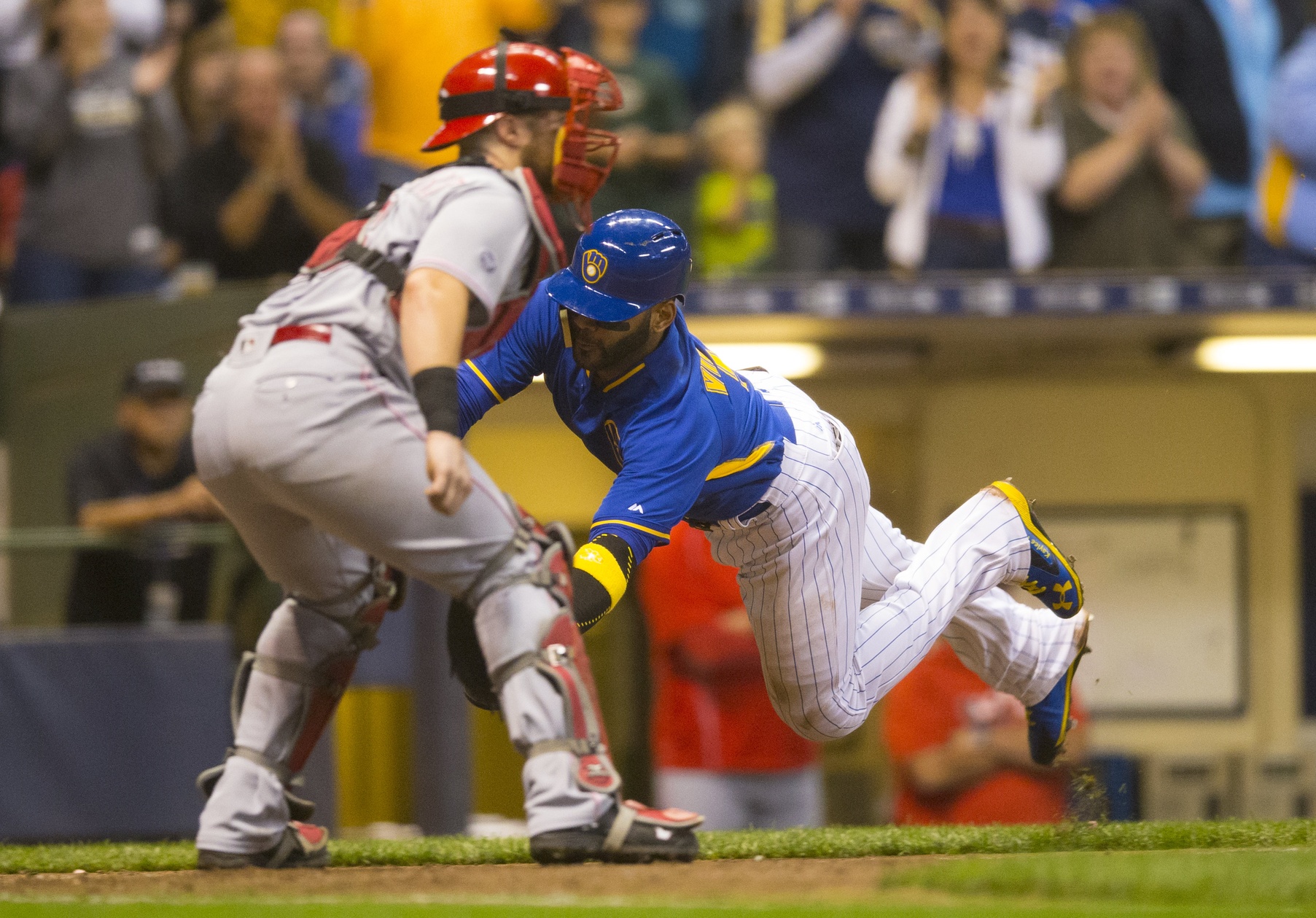Jonathan Villar led the Major Leagues in stolen bases with 62. However, according to Baseball Prospectus’ Baserunning Runs (BRR), Villar actually produced negative value on the base paths this past season. In fact, only Chris Carter created more negative value than Villar amongst non-pitchers. Villar had -2.4 BRR this season, which would put him in the between poor and average, according to the BP glossary. While there were certainly some grumbles on Twitter regarding Villar’s baserunning, I was surprised by how bad he actually rated and wanted to see where the negative value came from.
Before we go further, BRR is intended to determine a player’s productivity on the base paths in all situations. It’s defined as follows:
Measures the number of runs contributed by a player’s advancement on the bases, above what would be expected based on the number and quality of the baserunning opportunities with which the player is presented, park-adjusted and based on a multi-year run expectancy table. BRR is calculated as the sum of various baserunning components: Ground Advancement Runs (GAR), Stolen Base Runs (SBR), Air Advancement Runs (AAR), Hit Advancement Runs (HAR) and Other Advancement Runs (OAR).
With the definition in mind, here’s how Villar rated across the components of the stat:
| Baserunning Category | 2016 Villar |
|---|---|
| GA_OPPS | 53 |
| GAR | -3.57 |
| SB_OPPS | 76 |
| SBR | 1.53 |
| AA_OPPS | 55 |
| AAR | -0.93 |
| HA_OPPS | 61 |
| HAR | 0.47 |
| OA_OPPS | 7 |
| OAR | 0.14 |
| OPPS | 252 |
In the chart, OPPS stands for opportunities. His greatest number of opportunities came from stolen base attempts, which was also his strongest area. His 1.53 SBR came in second on the team, only behind Keon Broxton (2.03). (For reference purposes, Billy Hamilton lead the majors in SBR with 4.75. Second place was Travis Jankowski with 2.64. Billy Hamilton is ridiculous.) Villar has consistently rated well in this category in his career, producing positive every year he played for the Astros before coming to Milwaukee.
Villar’s biggest weaknesses came on ground advancement runs (-3.57) and air advancement runs (-0.93), meaning that Villar had trouble this year advancing on infield ground balls that were turned into outs. Villar’s GAR output is unspeakably bad. He was fifth worst in MLB, ahead of only Yadier Molina, Dioner Navarro, Dustin Pedroia, and Yasmani Grandal. Even David Ortiz, who barely runs when he hits the ball, was over half a run better than Villar.
Looking at Villar before he came to Milwaukee, it’s difficult to say this was a particular weakness of his because of the small sample sizes. While GAR recorded 53 opportunities in 2016, from 2014-2016 in Houston, he only had 52 opportunities, though it was a slightly positive rate (2.23 cumulative GAR).
It’s hard to believe that Villar will be this bad moving forward. The MLB bottom feeders in GAR tend to be your slow catcher, 1B, DH types. Considering his success in stealing bases, he should have the instincts to get good jumps on grounders so he can occasionally advance.
The Brewers also grounded into 131 double plays this season, above the National League average of 120. Ryan Braun lead the team with 20, and he frequently hit close to Villar in the batting order, which could have hurt Villar’s GAR. A slight improvement in this area would help to make Villar a more well-rounded player and build on his success this year with the bat and stealing bases.
Updated from previous version to reflect double play totals.

Curious what the NL average for DPs was. Looks like you used 131 for both the Brewers and the average…
Good catch. Article updated to reflect 120 average NL double plays.